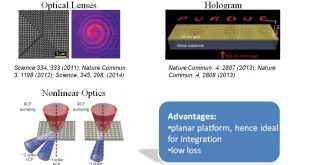Nanopowders are defined as powdered materials with individual particles having sizes under 100 nanometers. International Standardisation Organisation (ISO) defines nanopowder is a solid powder-like substance of artificial origin that contains nanoobjects, aggregates or agglomerates of nanoobjects or a combination thereof; 2) an assembly of nanoparticles; 3) a powder, all particles of which are smaller than 100 nm.
The particles in nanopowders are smaller than the wavelength of visible light and therefore are rendered invisible. This means they can be used in applications like sunscreens that are clear. The tiny size of nanopowders gives them an extremely high surface area to volume ratio that results in extraordinary properties like extreme strength.
Nanosized powders of elements and their inorganic compounds are the basis for the development of various nanostructured materials. These materials include nanostructured functional ceramics, hard alloys with increased wear resistance and toughness, dispersion hardened and modified structural alloys with enhanced performance characteristics, nanostructured protective thermo-, corrosion and wear-resistant coatings, polymer composites with fillers and inorganic nanoparticle modifiers for alloys
The applications for materials that incorporate nanopowders increase every day. Current applications include: Catalysts, Solid Rocket Fuel, Conducting Paste, Magnetic tapes & fluid, Targeted drug delivery, Metallic paint, Sintering aids, Transparent polymers, and Synthetic bone
Researchers at the U.S. Army’s Picatinny Arsenal, N.J., are using nanotechnology to craft nanopowders to build rounded plates, and eventually may lead to improved weapons penetrators for large- and small-caliber projectiles, warhead liners, and improved missile domes.
Picatinny researchers also are investigating the use of nanopowders for crafting a new generation of artillery shells in which the shell casing actually is an explosive, reactive material that scatters and burns when the artillery round impacts. This has the potential to create an artillery round with unprecedented destructive power.
In the past, Picatinny researchers have looked at the possibility of using nanopowders in smart paint that has the potential to change colors when subjected to electrical current to create an adaptable camouflage coating.
Various techniques are used for nanopowders synthesis, including processing in gas, liquid and solid phases. Such methods employ physical and chemical deposition from gas phase, precipitation from solutions, mechanical grinding, etc.
The formation of nanoparticles by homogeneous nucleation in supersaturated vapors followed by nanoparticles growth via condensation and coagulation is the basis of any gas phase nanoparticles manufacturing process. Fast cooling of saturated vapors or gas phase chemical reactions produce supersaturated vapors. Depending on the method used, processes for nanopowders manufacturing in gas phase include flame synthesis, evaporation in high-energy beams (laser radiation, accelerated electrons, focused microwave radiation), and plasmachemical synthesis in DC arc plasma.
Plasmachemical synthesis is the most versatile method for manufacturing of metal and inorganic compounds nanopowders, or nanopowders mixtures using inert, reducing and oxidizing atmospheres with controlled composition.
Nanopowder Market
The major Manufacturers in Nanopowder are Advanced Fibers and Powders, Advanced Nano Products, Alpha Nanomaterials, Antaria, Canano Technologies, EPRUI Nanoparticles and Microspheres, Kanematsu, NanoMech, Nanophase Technologies, Nanosol, Rajpurohit Group of Enterprises, and Tekna Advanced Materials
 International Defense Security & Technology Your trusted Source for News, Research and Analysis
International Defense Security & Technology Your trusted Source for News, Research and Analysis

